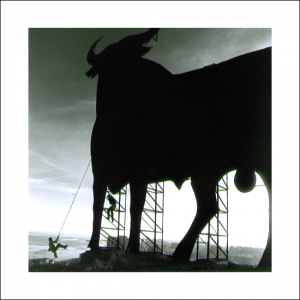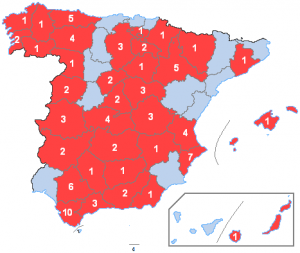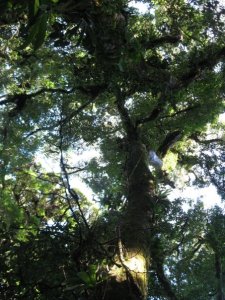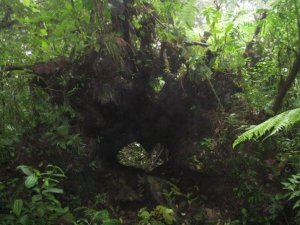Three Weeks of Japan Mania
July 15th-August 5th, 2009
Trip Conception, Goals, and Planning:
I’ve always been interested in Japan. Video games, sushi, manga, samurai, and most recently the Japanese language have all held my fascination at one point or another in my life. Growing up, I lived across the street from a wonderful Japanese woman, and we used to get together to drink tea and discuss cultural differences. And finally, in my Freshman year of college, I was fortunate enough to be assigned a Japanese roommate. Actually, my dorm housed no fewer than seven Japanese students. So, before the year was out, my friend Laura and I had resolved to travel to Japan, visit our friends, and see for ourselves the multifaceted wonders of this easternmost country.
We built our plans around visiting friends and utilizing the unlimited rail travel afforded us by the Japan Rail Pass. Luckily, Laura and I had similar interests concerning Japan and what we would like to get out of the trip. Japan is a large country, and one could easily spend a month or more exploring a single one of it’s many different aspects: the bustling, chaotic metropolises, the painfully beautiful countryside, the traditional culture of geisha and samurai, the modern one of technological wonders, manga, and kawaii (cute). And is it better to go go go, packing as much as you can into a few short weeks, or to relax and enjoy the decadence of hot springs and fantastic views of Mount Fuji?
Laura and I decided to try for a balance, and I think our itinerary reflected that quite well. On the other hand, our itinerary did have certain weaknesses, mostly in the form of lengthy train rides and our budget limitations. We stayed on Japan’s main island, Honshu, the entire time, but reached almost to the furthest ends of it.
———————————
Considerations/Advice:
Cost: Our budget was approximately $2500, not including food or souvenirs. The main costs involved were airfare ($800 round trip), the JR pass ($600). The JR pass was expensive, but so are the bullet trains – with our itinerary, the pass saved us literally thousands of dollars. We saved money on accommodations by staying with friends in Tokyo and staying mainly in hostels otherwise, so we paid between $25-50 on a normal night. Our two splurge nights were the Ryokan on Miyajima and the temple on Koyasan, at $100 each. Other included costs are bus and subway tickets and admission to museums, temples, shrines, hot springs, etc. Food costs are, of course, highly variable and are therefore not included, (with rare exceptions such as the meals included in the temple stay), but you can eat very well in Japan on even the tightest budgets (see Food for more information.)
Thinking Ahead: The main thing we had to do before we left was order the JR rail pass. You cannot get a JR pass once you are inside of Japan – you will have to order and receive the pass before you leave the U.S., which depending on where you live can be a bit tricky. We ordered ours online through this travel agency, and they took a few weeks to arrive. We bought plane tickets about three months in advance, and reserved most of our accommodation ahead of time as well – recommended if you want to stay in the cheapest places, as a lot of the best value places are small and might fill up.We were only unable to visit one of the places we’d hoped to go – the Ghibli museum, which apparently requires tickets reserved quite some time in advance.
Timing: In late July and early August, the weather in central Japan is considered miserably hot and humid, so it wasn’t the most crowded or expensive time to be there. Since the weather was pretty comparable to summer in our native Missouri, we coped pretty well with the heat, although it did feel good to escape north and to the mountains on some days. It rained often, but usually lightly, so we just carried small umbrellas with us at all times. Two things we were able to do specifically because it was summer time were part of the Matsuri Gion festival in Kyoto, and a fireworks summer festival in Tokyo. Lots of people go to Japan for cherry blossoms in the spring or the fall colours, so things are more expensive during those times. Generally, central Japan is scenic in all seasons, especially gardens that are landscaped to showcase the different parts of the year, and also relatively mild most of the year, although some things might be harder to do in winter.
Food: Japan has lots of lovely, delicious food. If you like trying new things, it will be a paradise for you. However, if you have any dietary restrictions, you may end up eating basic things like rice and steamed vegetables, because Japanese food often includes lots of seafood and meat (beef, pork, anything is fair game), even if only for flavoring. If the restriction is merely pickiness, try to have an open mind. My friend Laura went there hating all seafood (luckily she really, really likes rice), but by the time we left had discovered she quite liked dried salmon and many kinds of sushi. Eating in Japan can be extremely expensive or extremely inexpensive. Konbini convenience stores offer a variety of filling and tasty hot/cold meals for about $5, and you can fill up on Onigiri for even less. Even sushi can be had for very reasonable prices!
Getting Around: Most of Japan’s transportation systems are fast, reliable, and remarkably easy to understand given the language barrier (see Language). We found that people were extremely willing to help us if we were lost or just unsure about which buses to take or where to get off the subway. Bullet trains are fast but expensive (to a lesser extent, that goes for all trains), buses can be slow but are often necessary. There is very little room for luggage on any of the public transport, especially getting around Tokyo and Osaka by subway, so pack as lightly as you possibly can – sometimes we had to carry our suitcases in our laps, upright. If you relax, getting around can be half the fun, but if you are in a hurry, it can make you miserable. We enjoyed using a wide variety of transportation during our trip, including private cars, taxis, bullet trains, express trains, local trains, buses, cable cars, funiculars, aerial tramways, bicycles, ferries, subways, and, largely, our own two feet.
Language: There’s no way around the fact that the language difference in Japan is substantial. You won’t even recognize place names on most signs, because they are written in Kanji symbols. Japanese is a language totally unrelated to English, which uses no less than three forms of writing. Many Japanese people, especially those outside of the big cities, and even those involved in tourism, speak poor or no English. Given all of this, however, the language situation is as easy as it could possibly be. Maps and instructions are often very visual, with pictures to help you with the words. People are extremely willing to help you and creative in reaching understanding even when you can’t understand a word they say. My advice is to carry a piece of paper with the names of all the places you are visiting in Kanji, so that you can refer to this or show it to Japanese people if you get confused. Also, carrying a phrase book is very highly recommended – you will not look stupid for whipping it out, (usually when you do the people you are talking to are far more embarrassed about their English ;_;),and since Japanese is pronounced phonetically, you will probably be understood without too much trouble. With all this said, Laura and I both had some slight understanding of Japanese – enough that with the phrasebook, we could usually put stupid sentences together and even understand some basic questions, commands, numbers, etc – and segments of the trip, such as going north to Mutsu or staying with the monks on Koyasan, would have been quite a bit more difficult if we didn’t know any Japanese at all.
Other: We got all of our yen from ATMs, but finding ATMs that take American cards can be a bit tricky with one lifesaving exception – 7/11 convenience stores. These are prevalent, but stock up on cash when you can, since almost no businesses will take your cards.
———————————
Itenerary:
We left the US on July 15th and arrived in Tokyo on the 16th. In Tokyo we stayed for three days with my former roommate, Mayumi, whose apartment overlooked Tokyo tower. The first full day was a daytrip to Kamakura, where we saw our first shrines and temples, including magnificent Tsurugaoka Hachimangu, the Temple of Hase Kannon, and one of Japan’s most famous Daibutsu. The next day, Mayumi and another Japanese friend, Mitsuki, showed us the city of Tokyo – the Tsukiji Fish Market, Asakusa, Shinjuku, and Harajuku… then we changed into yukata for a fireworks festival followed by karaoke.
On the 19th, we left Tokyo early for northern Japan. We reached the Shimokita Hanto, the peninsula at the northernmost tip of Honshu, and lodged in the city of Mutsu for two nights in order to visit sulfurous, ash covered Osore-zan (Fear Mountain), the traditional Japanese gateway to hell and place of lost souls, during the Itako Taisai Festival, when blind mediums are said to summon the spirits of the dead.
On the 21st, we woke up early again for the longest train ride of the trip, heading back south and west, through the mountains to Takayama, a lovely town full of old, preserved houses, purple wisteria, and the heady scent of sake. While in Takayama, we took a bike tour up through the Japan Alps (during a solar eclipse, no less!) to see an amazing set of waterfalls, then continued on to Kanazawa, home of one of Japan’s three best gardens, as well as an old samurai district.
The 24th found us in Kyoto, the cultural capital of Japan. This is where Memoirs of a Geisha was filmed, and it is home to an overwhelming number of temples, gardens, and shrines. Over two days, we saw Kinkakuji, Ginkakuji, the Fushimi Inari Shrine, Sanjusangendo, the Kiyomizudera, the super modern train station, and even a bit of the Matsuri Gion festival.
On the 26th we continued to Hiroshima to visit Peace Memorial Park and the Atomic Dome during the most sobering day of our trip. Then we took the ferry to nearby Miyajima, waited out the tour groups to see the Floating Tori by twilight, spend the night in a traditional ryokan, and climb Mt. Misen in the morning.
On the 28th we woke up in Osaka and spent the day in Nara, a former capital of Japan, famous for herds of tame deer and the world’s biggest wooden building. On the 29th we paid a quick morning visit to Himeji Castle before working our way up to Koyasan, a mountain covered in temples (including one housing Japan’s largest rock garden), and actually spending the night in one. We woke up at 6 for morning prayers, ate shōjin ryōri, traditional Buddhist cuisine, and very narrowly escaped having to sleep in the ancient graveyard!
On the 31st we headed to Nikko, with it’s golden shrines, the original ‘see no evil, hear no evil, speak no evil’ monkeys, and the grave of Tokugawa Ieyasu, the first shogun of Japan. The hot spring resorts and fantastic nature in nearby Chuzenji and Yumoto made this the most relaxing part of our trip.
On August 2nd we returned to Tokyo, with just enough time in the evening to see Tokyo Disney Sea. We stayed for the next few days with Mitsuki, and she and Mayumi continued showing us around Tokyo, including a visit to Akihabara electric town, some cartoon merchandise shopping, a skybus tour of the Ginza business district, museums in Ueno park, and, in Yokohama, a world-fair type celebration of Japan’s 150 years of being open to the western world. The last night of the trip, the four of us watched Ponyo and burned hanabi fireworks in a little park, sad to say goodbye to Japan.
———————————
Posts about this trip:
(Check back on this section from time to time – I’ll continue to put up new links!)
Journal Entries:
A Night View of Tokyo (Tokyo, Japan – 7/17)
Sanjusangendo (Kyoto, Japan – 12/8)
Photos: A Sushi Feast, The Smallest Corner, Buddhapada in Kamakura
Notes: Onigiri, Six Funny Things about the Japanese Language, Yuba, Late Night Okonomiyaki





















